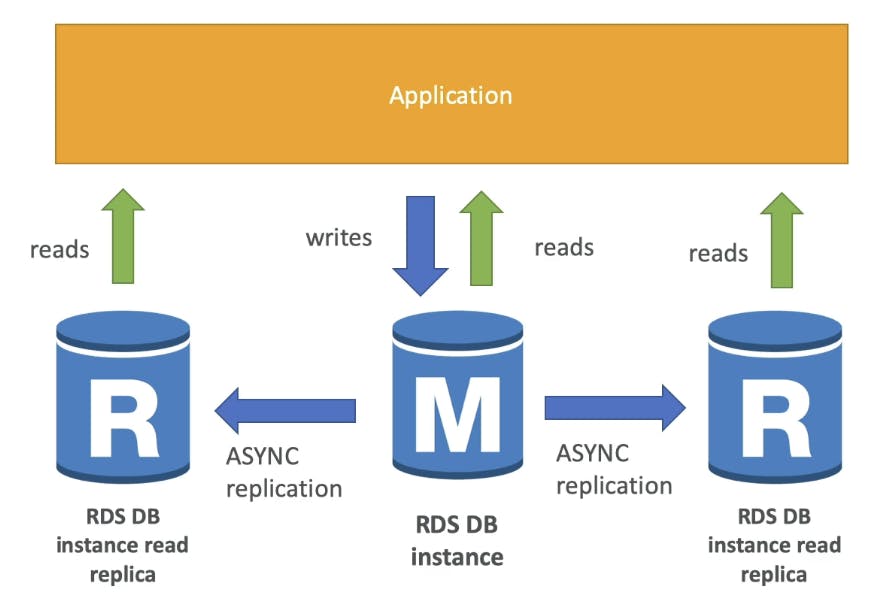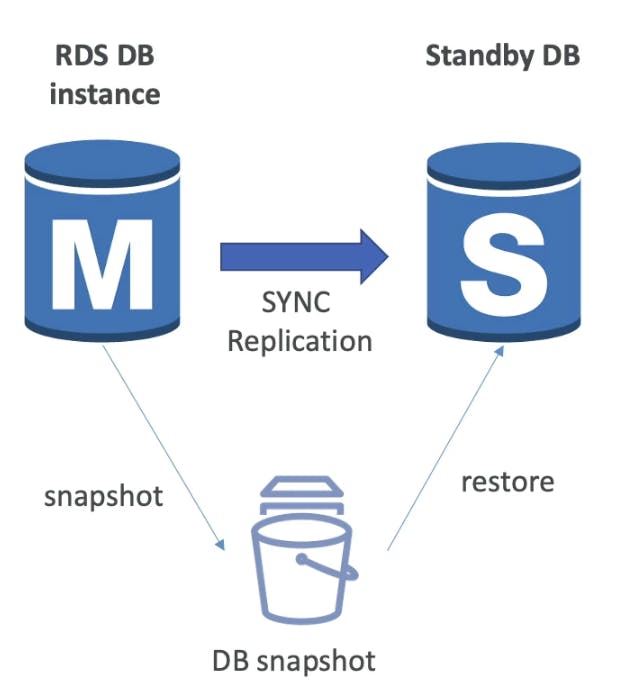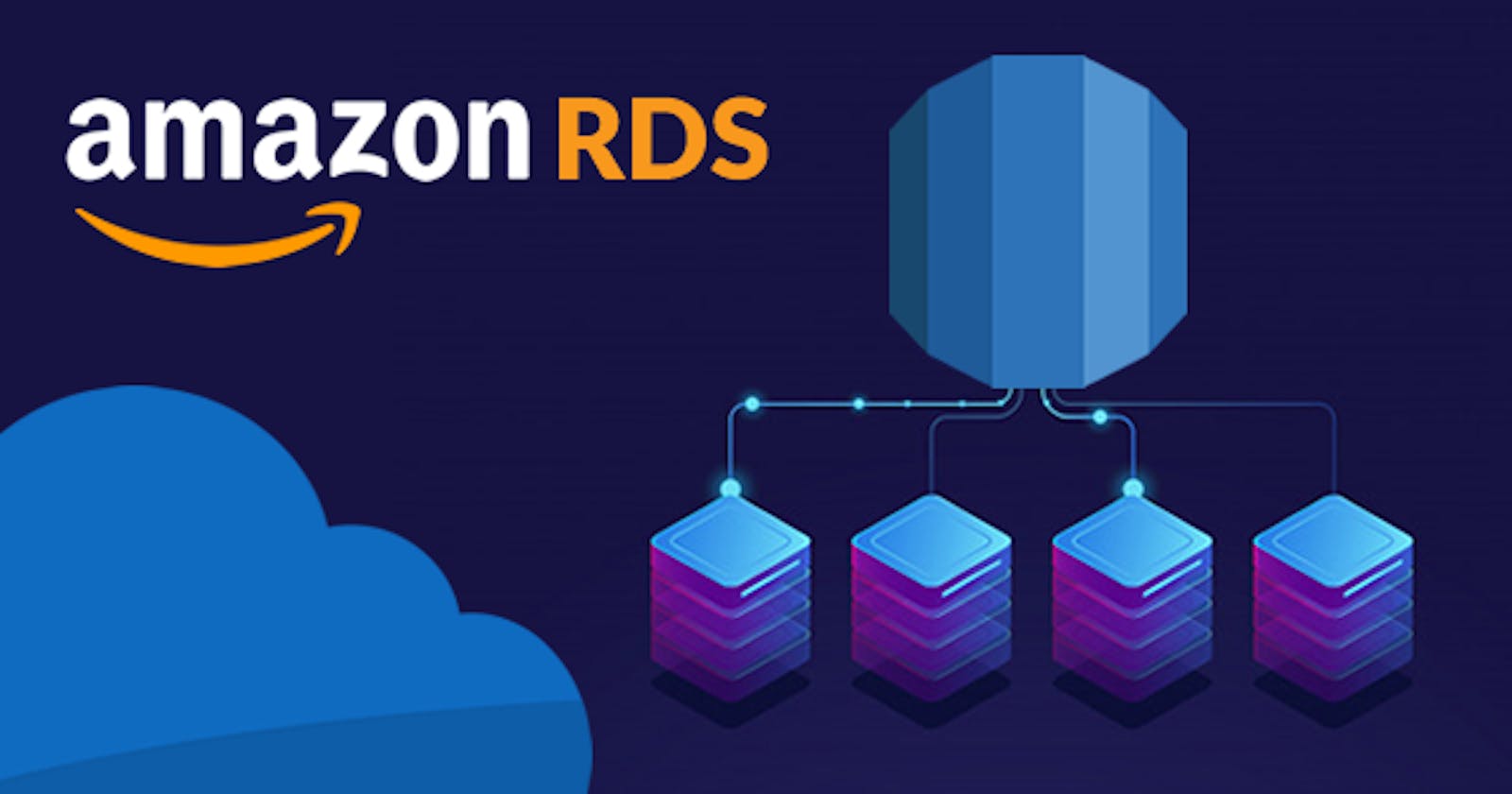RDS stands for Relational Database Service. It’s managed DB service for DB use SQL as a query language.
It allows you to create database in the cloud that are managed by AWS:
- Postgress
- MySQL
- Oracle
- MariaDB
- MSSQL
- Aurora (AWS proprietary database)
Advantage over using RDS versus deploying DB on EC2
RDS is a managed service:
- Automated provisioning, OS patching
- Continuous backups and restore to specific timestamp
- Monitoring dashboards
- Read replicas for improved read performance
- Multi AZ setup for DR (Disaster Recovery)
- Maintenance windows for upgrades
- Scaling capability (vertical and horizontal)
- Storage backed by EBS
RDS Backups:
- Backups are automatically enabled in RDS.
- Automated backups:
- Daily full backup of the database
- Transaction logs are backed-up by RDS every 5 minutes
- ⇒ ability to restore to any point in time (from oldest backup to 5 minutes ago)
- 7 days retention (can be increased to 35 days)
- DB Snapshots:
- Manually triggered by the user
- Retention of backup fo as long as you want
RDS - Storage Auto Scaling

- Helps you increase storage on your RDS DB instance dynamically
- When RDS detects you are running out of free database storage, it scales automatically
- Avoid manually scaling your database storage
- You have to set maximum Storage threshold (maximum limit for DB storage)
- Automatically modify storage if:
- Free storage is less than %10 of allocated storage
- Low-storage lasts at least 5 minutes
- 6 hours have passed since last modification
- Useful for applications with unpredictable workloads
- Supports all RDS database engines (MariaDB, MySQL, PostgreSQL, SQL Server, Oracle)
RDS Read Replicas for read scalability

- Up to 5 Read Replicas
- Within AZ, Cross AZ or Cross Region
- Replication is ASYNC, so reads are eventually consistent
- Replicas can be promoted to their own DB
- Application must update the connection string to leverage read replicas
RDS Read Replicas — Use Cases
- You have a production database that is taking on normal load
- You want to run a reporting application to run some analytics
- You create a Read Replica to run the new workload there
- The production application is unaffected
- Read replicas are used for SELECT (=red) only kind of statements (not INSERT, UPDATE, DELETE)
RDS Read Replicas — Network Cost
- In AWS there’s a network cost when data goes from one AZ to another
- For RDS Read Replicas within the same region, you don’t pay that fee

RDS Multi AZ (Disaster Recovery)

- SYNC replication
- One DNS same — automatic app failover to standby
- Increase availability
- Failover in case of loss of AZ, loss of network, instance or storage failure
- No manual intervention in apps
- Not used for scaling
Note: The Read Replicas be setup as Multi AZ for Disaster Recovery (DR).
RDS - From Single-AZ to Multi-AZ

- Zero downtown operation (no need to stop DB)
- Just click on “modify” for the database
- The following happens internally:
- A snapshot is taken
- A new DB is restored from the snapshot in a new AZ
- Synchronization is established between the two databases
